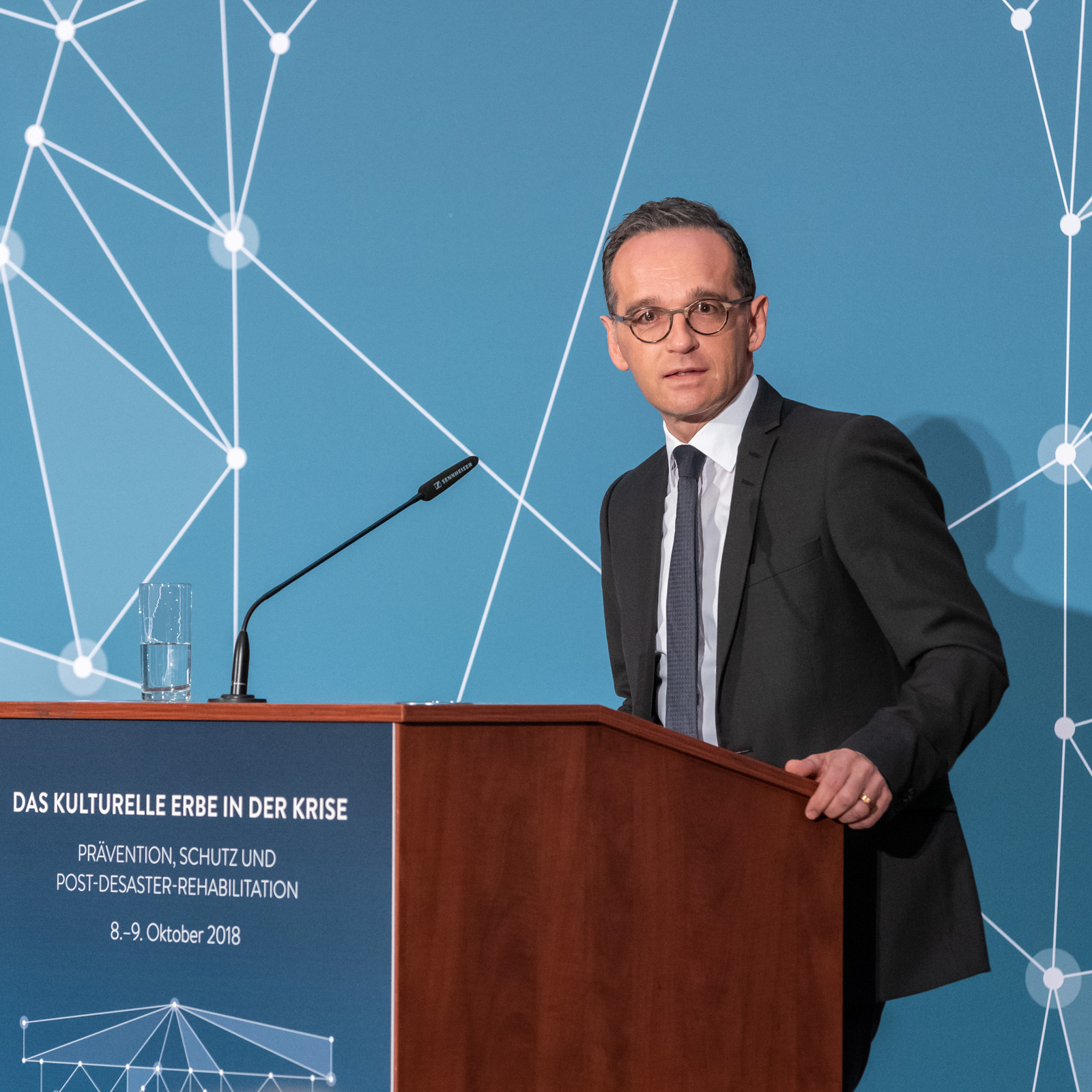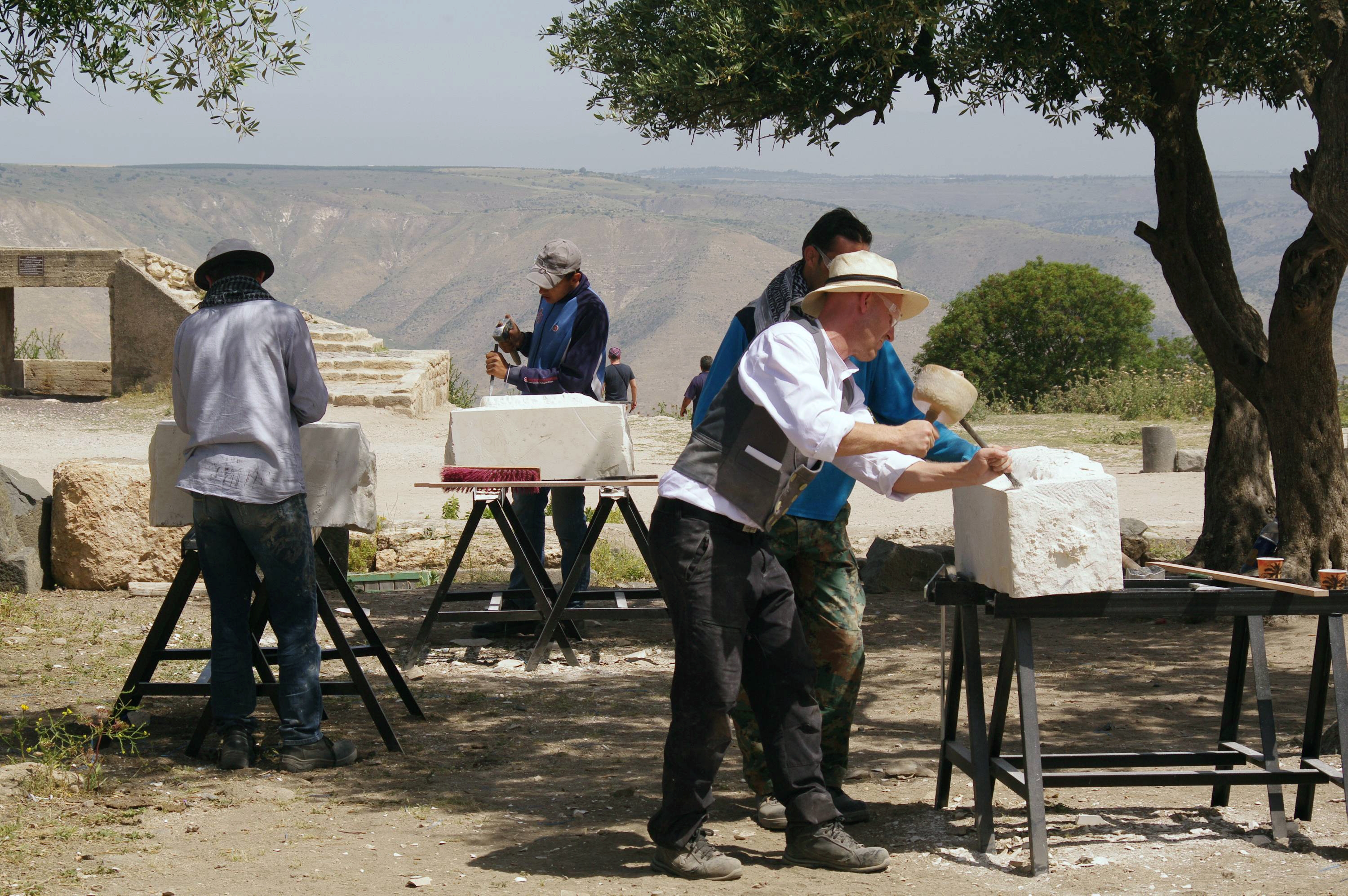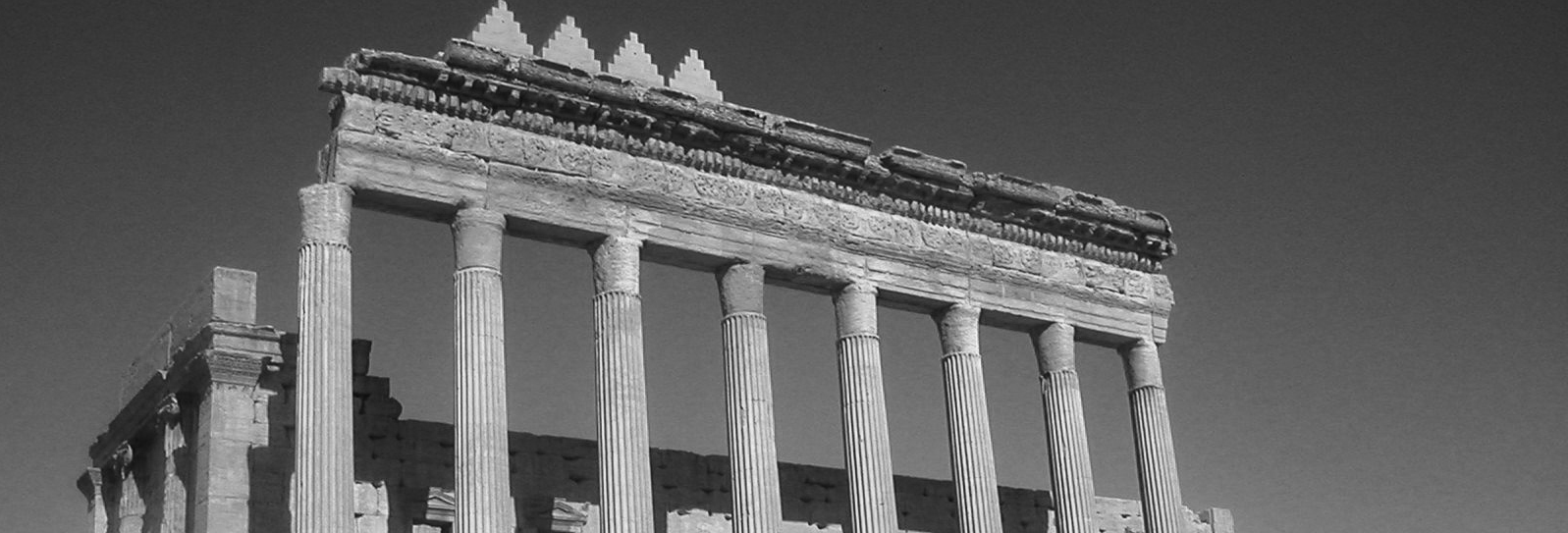
Welcome Address by Professor Friederike Fless, President of the German Archaeological Institute (DAI)
- Home
- Welcome Address by Professor Friederike Fless, President of the German Archaeological Institute (DAI)

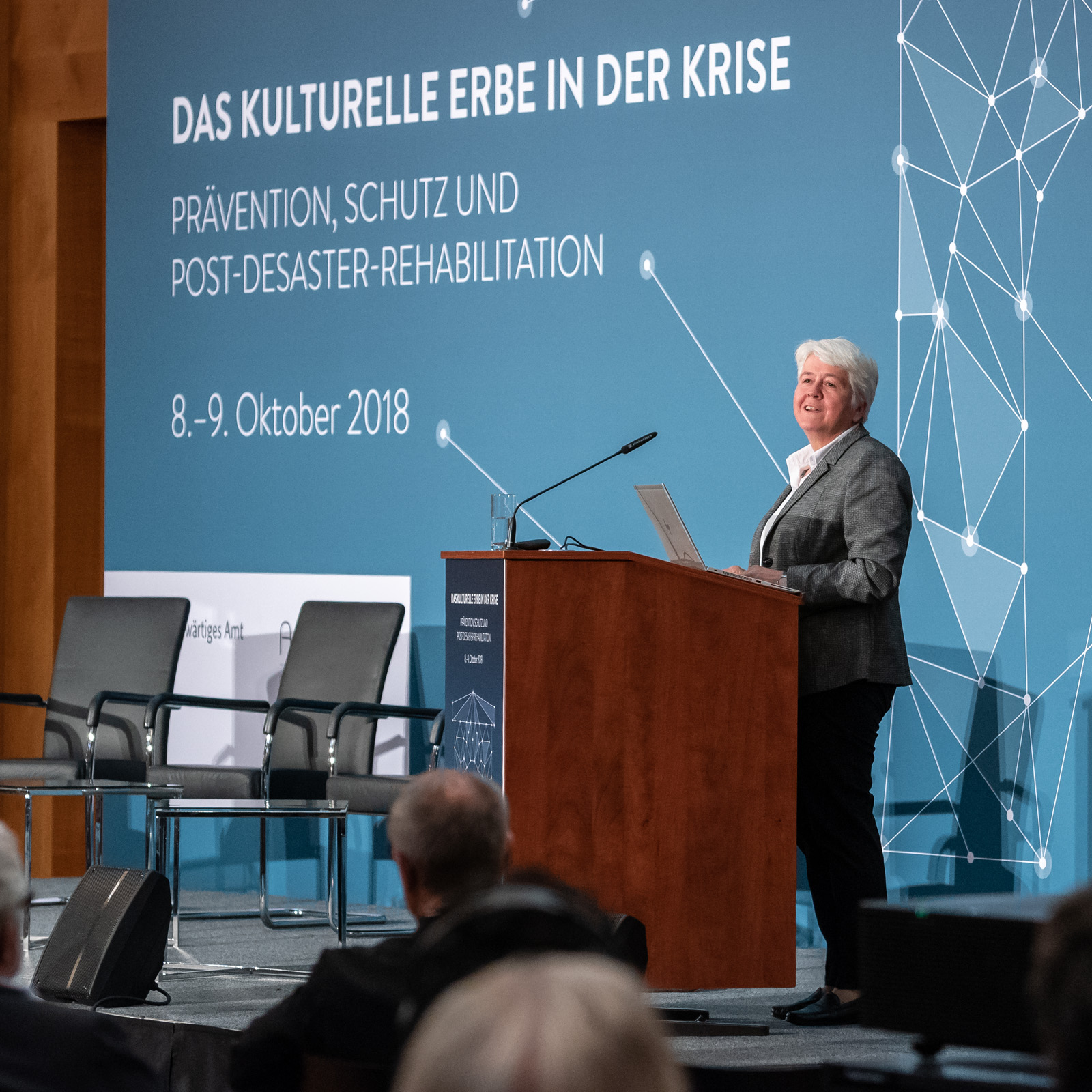
Dear Mrs. Tempel, Your Excellencies, members of the German Bundestag, dear Mr. Karl, dear representative of UNESCO Mr. Boccardi, esteemed colleagues and friends, ladies and gentlemen.
It is one of the horrible facts that numerous conferences in recent years have been titled Cultural Heritage in Crisis. Why, as you may ask yourself, is there another conference on this topic now? What is the heuristic value?
We all remember the images of the intentional destruction of the Buddhas in Bamiyan, the holy shrines in Timbuktu and the monuments in Iraq and Syria by the so-called Islamic State. We all know the images of the cities damaged by war like Sana’a, Mosul and Aleppo.
A look at the programme of the conference shows that we have not limited the topic of Cultural Heritage in Crisis to a further inventory of these brutal destructions. Rather, in the next two days, it is about approaching the subject fundamentally and raising awareness to almost forgotten catastrophes and also to creeping processes of damage and destruction of cultural monuments.
The conference is therefore based on a matrix that examines on the one hand the typology of crisis scenarios with their specific problems on the basis of individual examples. On the other hand, it is about the possibilities of action in the three main phases of crises: prevention, immediate intervention at the height of the crisis and post disaster measures.

Not only the catastrophes but also the slow creeping crises will be considered. Our conference therefore does not focus solely on the intentional destruction of cultural assets and the damage caused by the war. Disasters are also to be analysed against which no country is completely protected. In Germany, floods such as in Halle and Dresden, the collapse of the Cologne city archive and the fire at the Anna Amalia library led to immense losses and damage to cultural goods. Earthquakes like those in Nepal or Italy have damaged buildings and objects. The fire at the National Museum in Rio de Janeiro has once again tragically demonstrated the extent of such a catastrophe. And we all have to ask ourselves if we are in fact prepared for such catastrophes.
All these disasters have in common that they attract a lot of international attention for a short period of time. The first images of buildings and objects that are destroyed and rescued are spectacular. They trigger spontaneous reactions and support measures worldwide. But like the destruction in Iraq and Syria, they are soon forgotten, nearly as fast as the events themselves. Equally, the necessity for immediate action on an international level soon disappears from view. This applies even more for crises that have a gradual impact on cultural heritage and are usually not reported do not occur in the media at all.
The effects of climate change or damage from pollution often lead to a slow process of degradation and loss of substance; hence, the moment of the actual crisis cannot even be named. Thus, the phase of prevention and post-disaster measures are difficult to define. Processes of overbuilding and deconstruction of historical remains by expanding cities or the consumption of intact landscapes with their historical layers through agriculture or infrastructure are also slow and steady processes that contribute to the loss of cultural heritage.
The different scenarios of threat, damage or even destruction, however, also have different effects depending on the source, material and type of objects. Their protection and preservation requires different methods. Anything that has not been destroyed by the fire at the National Museum in Rio de Janeiro is likely to be destroyed by insect damage or mould which follows the extinguishing water. Therefore, immediate intervention is crucial in times of crisis. However, even if there are excellent national solutions and also guidelines, we are not sufficiently prepared for such crises on an international scale. Of course, a team of experts from UNESCO was in Rio de Janeiro shortly after the disaster and provided excellent on-site support with the Emergency Preparedness and Response Unit. However, compared to humanitarian aid, the structures and logistics for rapid aid for cultural heritage are still underdeveloped at the international level.
The four workshops of the conference will therefore play a key role. Based on the analysis of crisis scenarios, we will discuss which measures of prevention, of immediate intervention at the height of the crisis and also in the post-disaster situation are possible and successful. It is about analysing the strengths and weaknesses of our actions so far, and identifying deficiencies in order to jointly develop concepts for how we can better protect and preserve our cultural heritage internationally.
We should also analyse the different time horizons. An international study programme in Egypt or Jordan has an effect in a distant future. This also applies to the safeguarding of cultural goods with digital means. The support provided by the provision of material for the protection of objects in war zones, however, is aimed at the near future. Preventive measures therefore work with different time horizons. Another issue concerns the options for immediate intervention in a disaster situation. Again, in a post-disaster situation we need a different pace. Some measures have to be implemented quickly, whereas other measures are not urgent but require meticulous planning. It is important to clearly identify these temporal perspectives in order to avoid the ‚Issue-Attention Cycle‘.
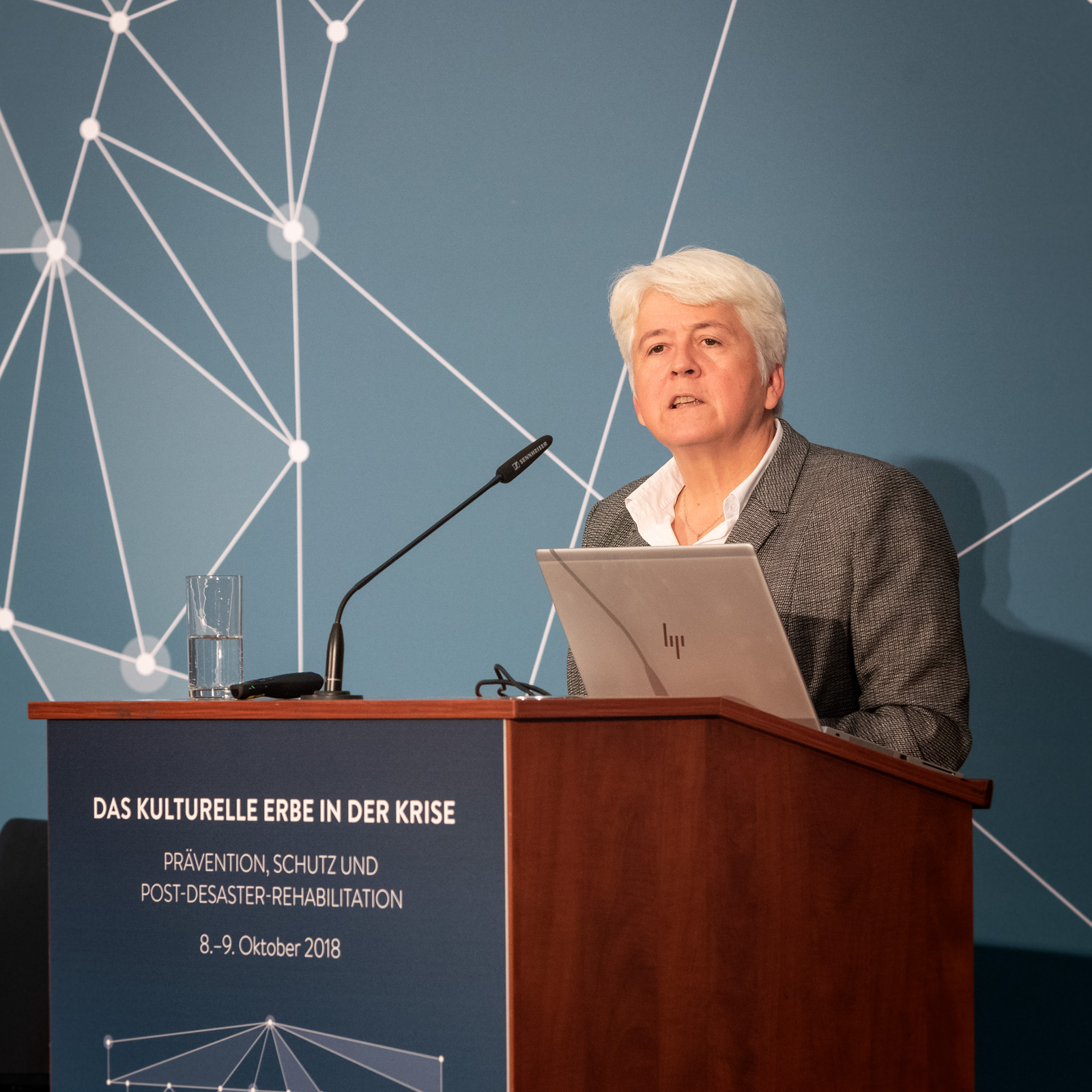
Effective protection and preservation of our cultural heritage requires, in addition to quick intervention in times of crisis, long-term perspectives for action. Over the next two days we must also formulate clear results in this regard. This means to consider the time frame and to clearly identify which measures help immediately and what measures need to be planned over a longer period. Often enough policy makers have to react at short notice. And we, as actors, are a true challenge because archaeologists think in wider time horizons and can imagine that projects need a long time to be implemented.
At the end of this outlook for possible results of our conference allow me to express my gratitude. I would like to thank the Federal Foreign Office, represented by Mrs. Tempel, for hosting our conference. And I would like to thank all speakers, moderators and the workshop participants, who have come to Berlin from all over the world, from Egypt, Yemen, North America and many other countries, as the colleagues from Syria and Iraq, some of whom have to reside in Europe.
My special thanks go to the staff of the Archaeological Heritage Network for the organisation of the conference. To name but two of the many helpers, I would like to mention Velia Boecker and Sebastian Dobberstein.
But now I would like to start the conference with the first session and hand over the moderation to Prof. Matthias Knaut, Vice-President from the University of Applied Sciences (HTW) in Berlin.
Thank you very much.
Die Arbeit des Archaeological Heritage Network wird von vielen Partnern national und international getragen und vom Auswärtigen Amt und der Gerda Henkel-Stiftung gefördert.
